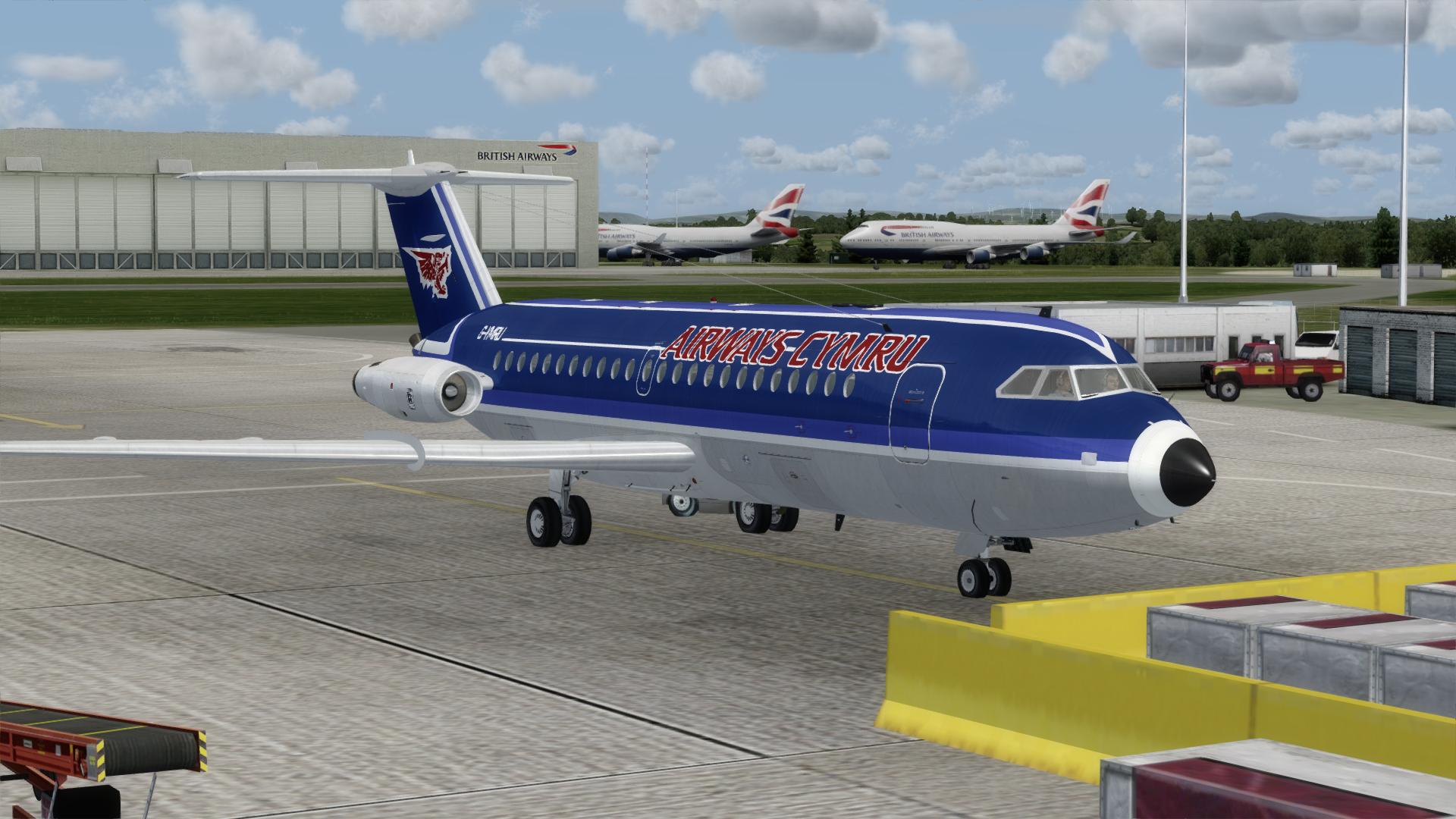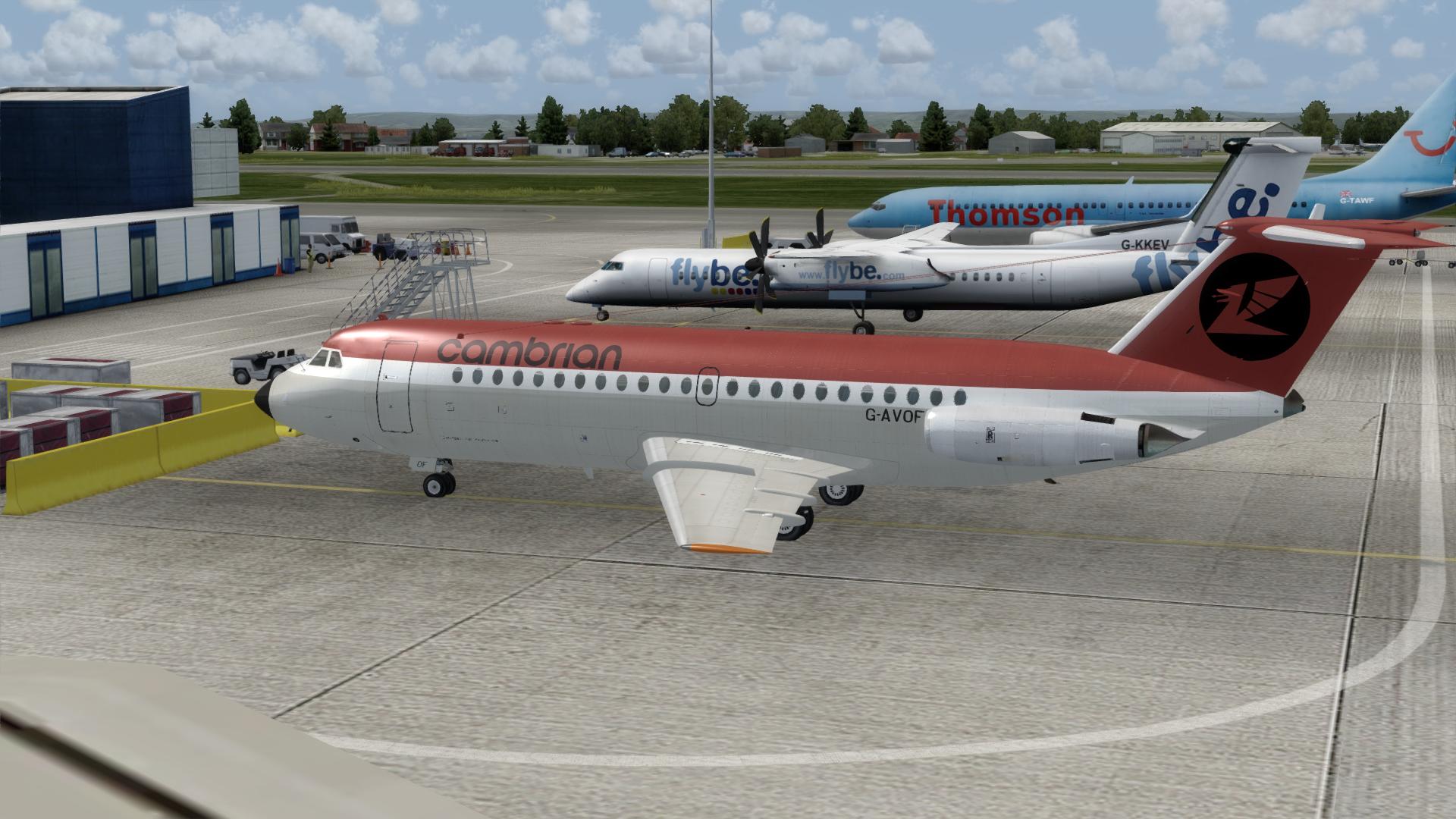Introduction
In the 1960s, prop driven aircraft were so old man. I mean, like, totally old school. If you wanted to be cool, get somewhere quick, and make the world take notice, you took a jet plane man. The problem was, jets were big. They were the preserve of the transatlantic elite, the film stars, the presidents, the wealthy. For a burgeoning package holiday market though, the prop liner reigned supreme. Short haul meant the Vickers Viscount or the Bristol Britannia. The bucket and spade airlines wanted a cut of the cool factor that BOAC had with the Boeing 707, but at a Viscount price. Enter the BAC One-Eleven.
Originally designed as a small 59 seater regional jet, the One-Eleven grew to 89 seats on introduction as the BAC One-Eleven 200. The little jet was only the second short haul jet ever in service, beaten only by the French Sud Aviation Caravelle. Unlike the Caravelle, the One-Eleven proved popular and orders for the diminutive jet continued to grow. The introduction of the 300 and 400 series saw more powerful engines and the 500 series saw a stretch to increase capacity to 119 passengers. All in all, the little British jet achieved a run of 244 aircraft before the line closed in the mid 1980s. In flight simulator terms, the One-Eleven is a much-missed aircraft. However, Just Flight have seen to it that the One-Eleven has got its chance to shine. But is it any good, or is it just a bit of nostalgia that can never recapture the past?
Availability and Installation
The Just Flight One-Eleven 300/400/500 is currently available direct from Just Flight and Just Flight resellers as a download only product (some resellers also offer a master back-up CD / DVD service for a minor additional cost). It is normally priced at £24.99, or the equivalent on currency cross rates. The download file size is 520MB and it requires 3.6GB of HDD space for installation. The installation process requires you to log in to your Just Flight account to verify the product and the installation process is intuitive and seamless.
What You Get
The One-Eleven saw service for over 50 years and in that time the aircraft was tinkered with and changed. To try and cover all the variations would be madness, but Just Flight have done their best to give you a broad selection to choose from. Three main variants are included, the 300 and 400 series, along with the larger 500 series. There are a selection of standard engine and hush kit variants for all models, along with air stairs or no air stairs versions as well. There are cockpit differences as well, with the 500 series BEA cockpit being very different to the 300 series. You also get a nice choice of liveries as well and a nice manual to help you get used to flying the old girl. All told, this is a rather nice little package.
The Walk Around
From the outside, the One-Eleven looks pretty nice. The extensive livery selection is good and the level of modelling detail is great. In the cockpit, it is cramped, but looks extremely well modelled. The textures are ok, with that "well worn" look that you expect in a 50-year-old aircraft. The finish is hit and miss though. What is nice is the night lighting. The cockpit oozes atmosphere, and in already cramped conditions, the cockpit feels a little more claustrophobic. Outside, the exterior modelling is very nice, with the engine nacelles nicely done with both the hush kits fitted and without. All in all, the modelling is pretty good.
Getting it Up!
Just Flight provide a tutorial flight for new users, and given my main squeeze is an Airbus A320, I thought it wise to follow it. The One-Eleven is from an era where the FMC did not exist and pilots had to work for a living. The cockpit is tight, to say the least, and so the layout of the instruments is, different. The 300/400 series cockpits all feature the hydraulic instruments fitted to the main instrument panels, whilst the 500 series moved them up to the overhead panel. In all aircraft though, it is the throttle quadrant which is the scariest thing I have seen since the old propliners. There are levers and handles all over the place. Along with the usual throttles, flaps, and speed brake controls, there is the large parking brake handle, the control locks, and the stall system dump valve. Add to that two huge trim controls for the ailerons and rudder and the throttle quadrant looks like a nightmare. Below the throttle quadrant are the radio panels and what 1960s technology called the autopilot. More on that later. For now, it is time to follow the tutorial.
For all the looks of complexity, the One-Eleven is a fairly simple aircraft, and the general rules about getting any jetliner set up also apply here. First, I get the power on, switching the battery on and then calling for the ground power to be connected. This is simply a case of selecting the ground power switch on the overhead and a nice GPU will appear outside to keep the aircraft "juiced up". There are a few other switches which provide a similar function. The "secure aircraft" switch toggles the chocks and other parking items whilst the "ground services" switch provides baggage carts for the starboard cargo hatch. It is a nice little feature.
I start the APU and, in all truth, I am disappointed to discover it starts immediately. All APUs take time to get running, but on the One-Eleven, it is instantaneous. I set the air supply and get ready to start the engines. They spool up a little more realistically, though I am not keen on the sounds. At idle the engines sound almost robotic like. Obviously, it is difficult to record a real life One-Eleven in action, so it is a fair compromise. With the engines running, I taxi out to the runway. Taxiing the little jet is a rather nice experience and the One-Eleven behaves itself nicely. For take-off, I set the flaps to 18 and the trim to 3UP. This is essential as the One-Eleven can be a bit of a ground hugger, especially the 300/400 series. At full throttle the engines take on that lovely high pitched turbine whine that characterise the early jets, and at just over 140 kts, I lift the nose and clear the runway. I hand fly the aircraft up to the cruise altitude and find it to be a great experience. The One-Eleven is a joy to hand fly. Landing is another joy, as the aircraft responds well to speed changes. Again, you will want to hand fly the approach, just for the pleasure of it.
Carry on Autopilot
Hand flying a long flight can get tedious. The autopilot is basic, but very serviceable. It comes with several modes ranging from full Manual Mode, which basically allows you to adjust the pitch and roll of the aircraft with a series of dials, Heading Mode, which follows the heading set on the HSI, VOR Loc Mode, which holds a course to a set VOR, and two glideslope modes for climbs, descents, and landings. There is also an altitude hold mode which works by switching it on and it holds your current altitude. That's it. It is basic but usable. It also needs to work in conjunction with the flight director. This has four modes, Off, HDG, V/L, and G/S. All of this combines to make long flights less taxing. Be warned though, there is no autothrottle, so you will need to watch your speeds carefully.
Issues
Whilst hand flying the One-Eleven is a joy, not everything works as it should do. My first main gripe is with the manual. Whilst it does contain all the information you need to fly the One-Eleven, it often feels disconnected or out of place from where you need it. For example, the need to set the trim to 3UP is covered in the tutorial, but only just, and with little explanation as to why. You will need to refer to the larger checklist at the back for a more detailed explanation. Then there are a few systems which simply do half a job. Take the anti-ice section as an example. The Engine Ice warning is constantly on, regardless of conditions. You can extinguish the light by turning on the engine anti ice, but apart from turning the light off, not much happens. The two gauges next to the engine anti ice seem decorative, with one reading anywhere from 40 to 70+ psi, the other, zero. I have no idea how to change that, or indeed, what they are telling me. There is no explanation in the manual. The main anti ice switches for the two systems on board do not work. The window heat system does work however, though it constantly reports "under heat" until you switch the system to low - high has no effect.
Other switches throughout the cockpit fail to function, like the runway turnoff light switch in the 500 series. The Mach trim light is constantly on, but the Mach trim switch does not work. This is only the case with the 500 model. Some of the texturing on the indicator lights also makes it difficult to tell if the light is on or off. This is particularly true of the master warning and airspeed indicator lights. They seem to glow red, even when off. Perhaps the most annoying feature is the inclusion of a switch on the captain's side marked "NAV/GPS" and just "GPS". This is often found in some of the lighter system aircraft and is a welcome feature for the novice - if it worked. Selecting GPS should set the NAV system to follow the route in the GPS, as is common in this kind of aircraft. It does not though. Try as I might, I have yet to make this feature functional. It is not even covered in the manual, in fact, in the screenshots of the 300/400 series cockpit do not even feature this switch. Finally, the trim seems way to sensitive for such a large aircraft. Simply adding a notch of trim up or down can result in large changes in pitch. It makes the aircraft difficult to trim out.
Technical Requirements
This version of the Just Flight One-Eleven 300/400/500 is for FSX / FSX SE / P3D only. Other specified technical requirements are as follows:
Windows 10 / 8 / 7 / Vista / XP (32 or 64bit);
FSX (SP2, Acceleration Pack, or Gold required), FSX Steam Edition, or P3D (v1 / v2 / v3); and
2GHz or any Dual Core, 2GB RAM, 512MB graphics card, and 3.6GB available HDD space.
Review Computer Specifications
The specifications of the computer on which the review was conducted are as follows:
Intel i7 4770K @ 4.4 GHz;2 x Nvidia 680 GTX 4 GB GPUs;
16 GB DDR3 memory @ 1866 MHz;
Windows 10, (64-bit); and
Microsoft Flight Simulator FSX Acceleration.
Finishing Up
The Just Flight One-Eleven is an aircraft of two parts. Much like Jekyll and Hyde, there is a sweet side, and then there is the dark side. The cockpit textures are ok, but not brilliant, some of which are a little low quality. The sounds are ok, as well, but nothing special. The bugs are numerous and let the aircraft down in a few areas and yet, in day to day use, it is really rather good. Flying VOR to VOR is a great way to experience the life of airline pilot in the 70s. And it is a skill which you can transfer to a modern airliner. It is certainly important to consider who this add-on is aimed at. On the one hand, it is not marketed at the full on procedural pilots like myself, and yet, you can fly it procedurally. Likewise, it is a little more complex than Just Flight's own F-Lite series of add-ons. Lovers of classic airliners will likely find themselves disappointed. The whole aircraft feels as confused about its place as I am trying to define it. At £24.99, it is also in an odd place as well. For just £6.00 more, the Aerosoft Twin Otter Extended can provide just as much fun with much greater systems depth. The thing is though, despite the faults and flaws, I quite like the One-Eleven. Hand fly and enjoy, but do not try and look behind the curtain.
Verdict and Scores
Verdict
| The Just Flight One-Eleven 300/400/500 is a middle of the road aircraft add-on that can offer challenges to both the novice and seasoned pro, one way or another. |
Scores
For |
Against |
Category |
Score |
|---|---|---|---|
| Great to hand fly | Lots of bugs and half-finished systems | External Model | 9.0 |
| Moody night lighting | Mediocre sounds | Internal Model | 9.0 |
| Sounds | 7.0 | ||
| Flight Characteristics (does it fly by the numbers) | 8.5 | ||
| Flight Dynamics (does it feel like what it looks like) | 9.0 | ||
| Documentation | 7.0 | ||
| Value for Money | 8.0 |
Overall Score

The Just Flight One-Eleven 300/400/500 is awarded an overall Mutley's Hangar score of 8.3/10,
|
















